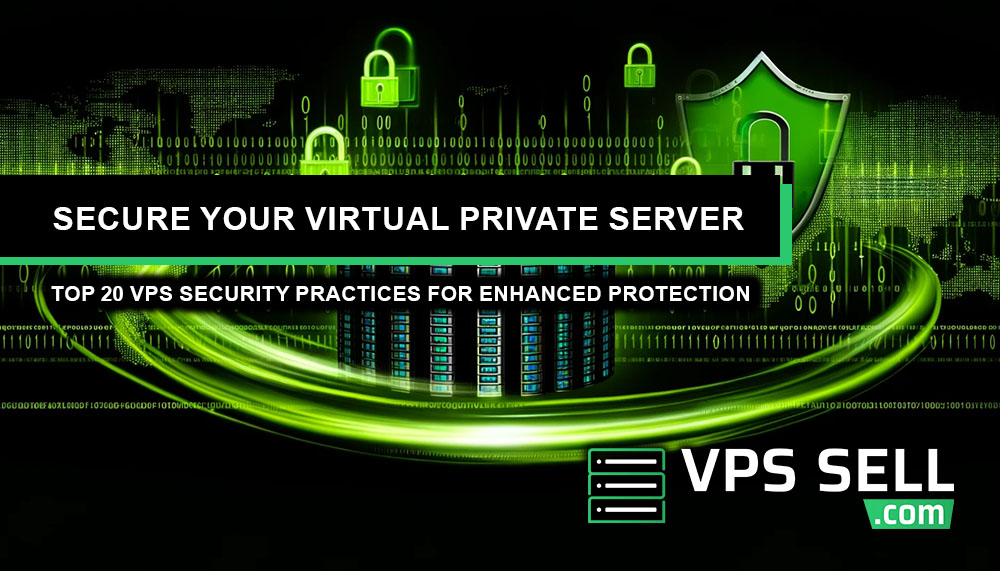
Secure Your Virtual Private Server: Top 20 VPS Security Practices for Enhanced Protection
In an era where digital security is paramount for businesses, securing Virtual Private Servers (VPS) against a myriad of cyber threats has become a crucial task. Linux VPS, renowned for their flexibility and performance, serve as a cornerstone for many companies' operations. However, their popularity also makes them a target for cybercriminals, underscoring the need for robust security measures. Implementing a comprehensive security strategy for VPS, including those hosted on platforms like VPSsell.com, is essential for protecting sensitive data and maintaining business continuity.
The Landscape of VPS Security Vulnerabilities
Cybersecurity threats evolve continuously, with adversaries seeking new ways to exploit vulnerabilities. Key threats to VPS security include malware, brute force attacks, sniffing attacks, SQL injections, cross-site scripting (XSS), broken authentication, and insufficient function-level control. Each of these threats can compromise the integrity, confidentiality, and availability of critical systems and data.
Enhancing VPS Security: Proactive Measures and Best Practices
Securing a Linux VPS involves more than just setting up initial defenses. It requires ongoing vigilance and a multi-layered approach to security. Here are the top strategies and practices to enhance VPS security, applicable to services provided by platforms like VPSsell.com and others:
1. Disable Root Login: Prevent direct access to the root account to reduce the risk of unauthorized system control.
2. Configure a firewall: Use tools like UFW or iptables to define and enforce rules that guard against unauthorized access.
3. Install Antivirus Software: Deploy reputable antivirus solutions to detect and mitigate malware threats.
4. Implement DDoS Protection: Protect your VPS from DDoS attacks that can overwhelm resources and disrupt services.
5. Change the Default SSH Port: Modify the default SSH port to reduce the risk of automated brute-force attacks.
6. Use SSH Keys for Authentication: Opt for SSH keys over passwords for a more secure and resistant authentication method.
7. Set Up an Internal Firewall with IP Tables: Fine-tune traffic control and access permissions with IP tables, ensuring only legitimate traffic is allowed.
8. Prefer SFTP over FTP: Opt for Secure File Transfer Protocol (SFTP) to ensure encrypted file transfers, enhancing data security during transit.
9. Establish a VPN: Use a Virtual Private Network (VPN) for an encrypted connection to your VPS, securing data from potential interceptors.
10. Review and Limit User Rights: Apply the principle of least privilege, ensuring users have only the necessary access for their roles.
11. Disable IPv6 if Not in Use: Limit potential attack vectors by disabling IPv6 on systems where it's unnecessary.
12. Monitor Server Logs: Keep an eye on logs for signs of unauthorized access or suspicious activities.
13. Use Fail2Ban: Automatically block IP addresses exhibiting patterns of malicious behavior based on log entries.
14. Deploy Malware Scanners: Use specialized malware scanners to detect and remove malicious software.
15. Disable Unused Ports: Close ports not in use to minimize entry points for attackers.
16. Install a Rootkit Scanner: Detect and eliminate rootkits, which can hide the presence of malware.
17. Adopt Disk Partitioning: Segment disk space to isolate sensitive data and system files, enhancing security.
18. Enforce Strong Password Policies: Advocate for complex passwords, changed regularly, to thwart brute-force attacks.
19. Regularly Update and Patch Systems: Maintain up-to-date systems to protect against exploits targeting known vulnerabilities.
20. Regularly Backup Data: Implement a robust backup strategy to ensure quick recovery from data loss or cyber attacks.
Addressing Common Security Challenges
A comprehensive approach to VPS security involves not only deploying the aforementioned measures but also addressing the root causes of vulnerabilities:
- Strengthening Password Security: Utilize password managers and multi-factor authentication (MFA) to enhance password security.
- Securing Ports: Conduct regular audits and use firewalls to control access, minimizing exposure.
- Applying Function-Level Access Controls: Clearly define user roles and permissions, ensuring actions are restricted based on necessity.
- Keeping Software Updated: Automate the process of software updates and patching to reduce the window of vulnerability.
- Prudent User Permission Management: Regularly review user permissions, adhering to the principle of least privilege to minimize risks.
For VPS solutions like those offered by VPSsell.com, these strategies provide a foundation for securing your digital assets against the evolving threat landscape. By implementing these best practices, businesses can significantly enhance their VPS security posture, safeguarding their operations against cyber threats and maintaining the trust of their customers in an increasingly digital world.